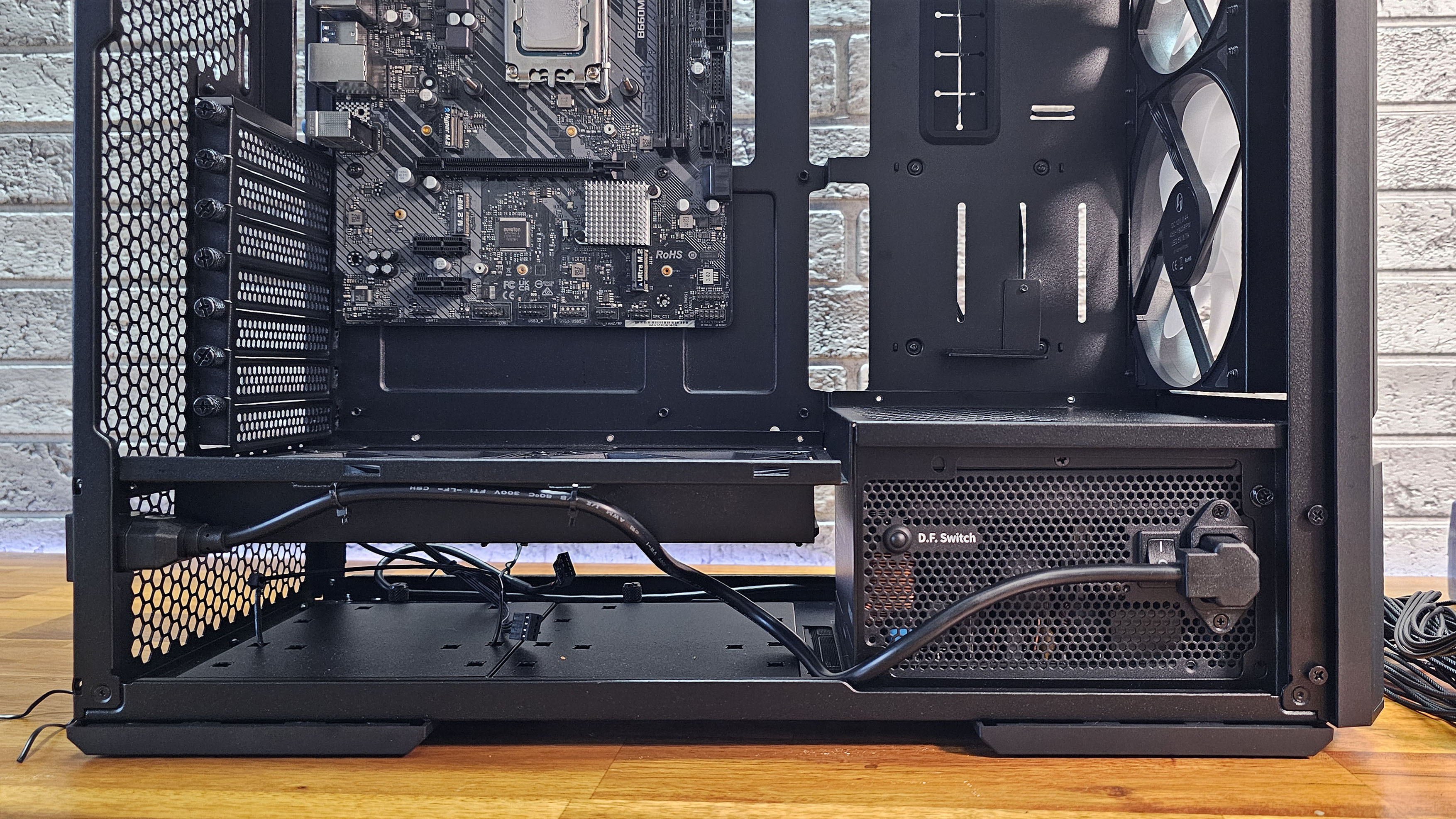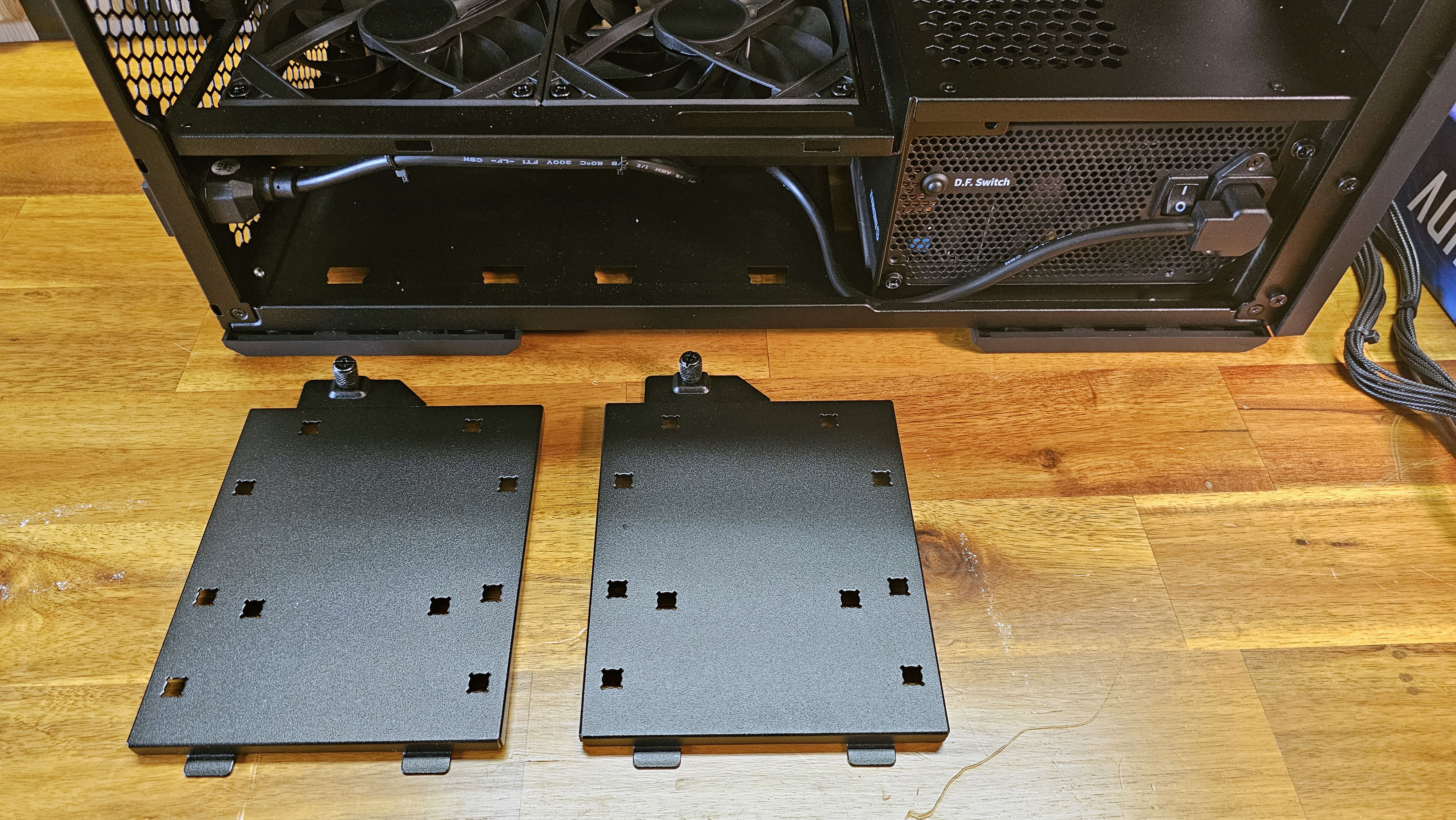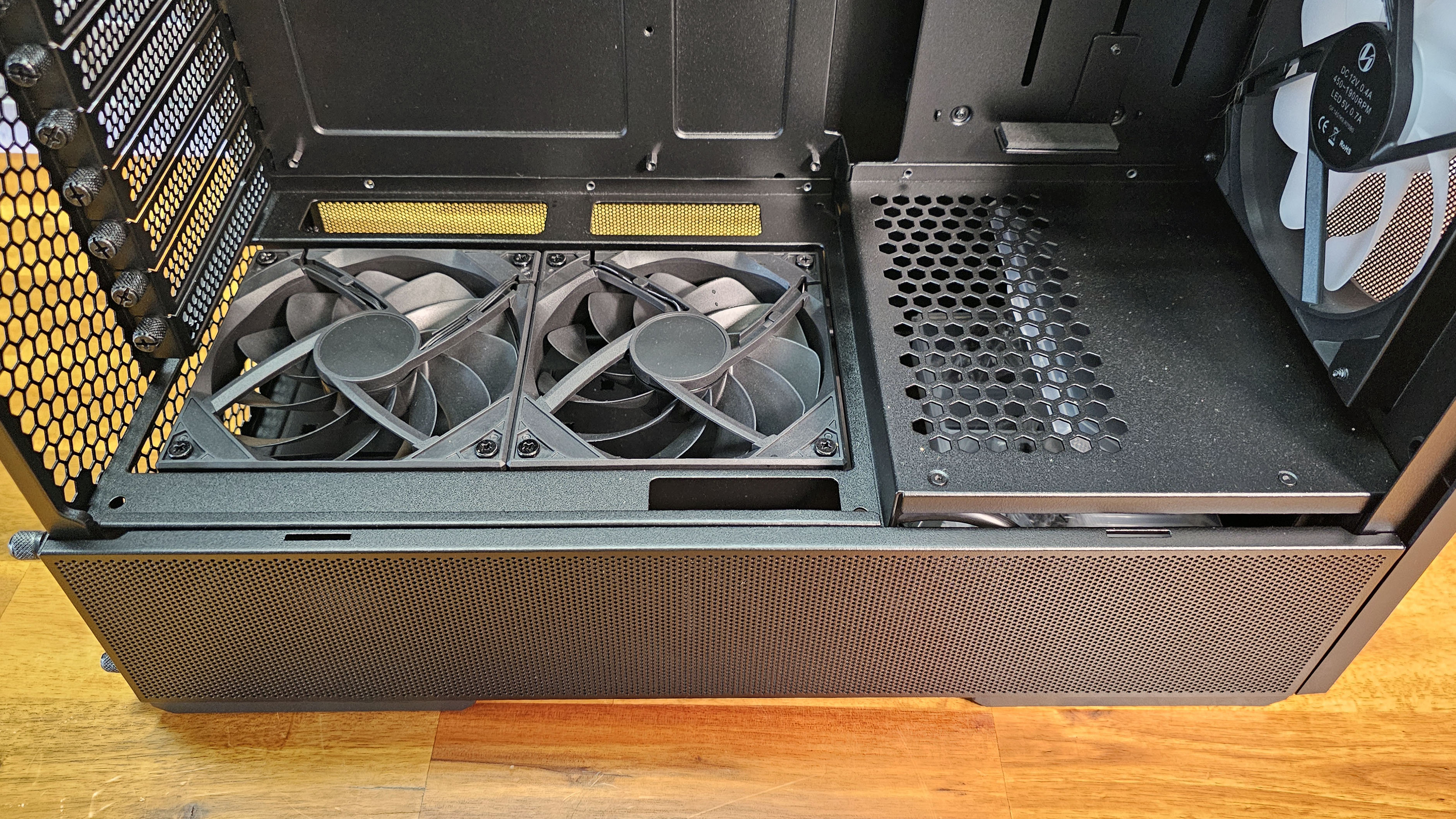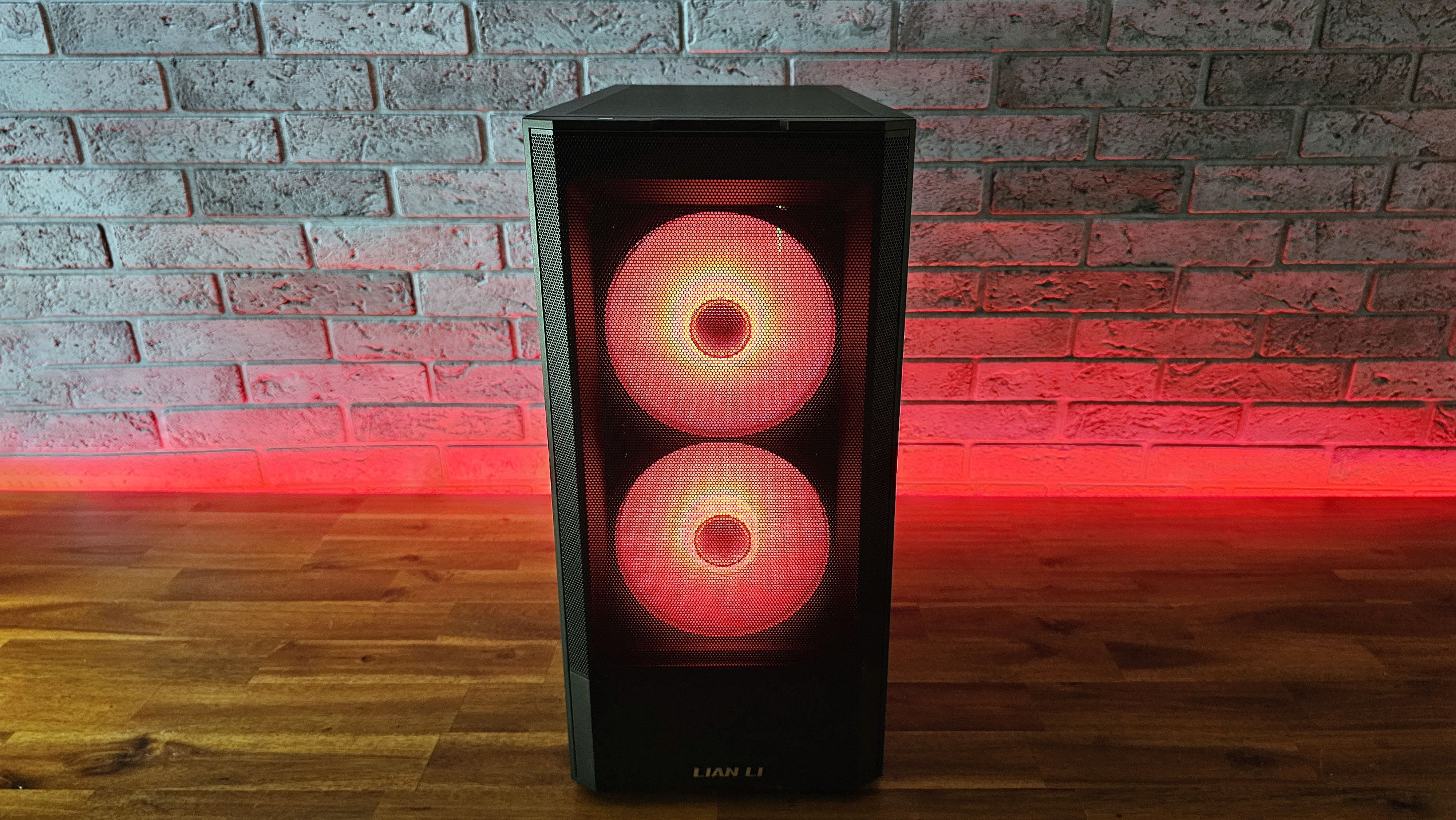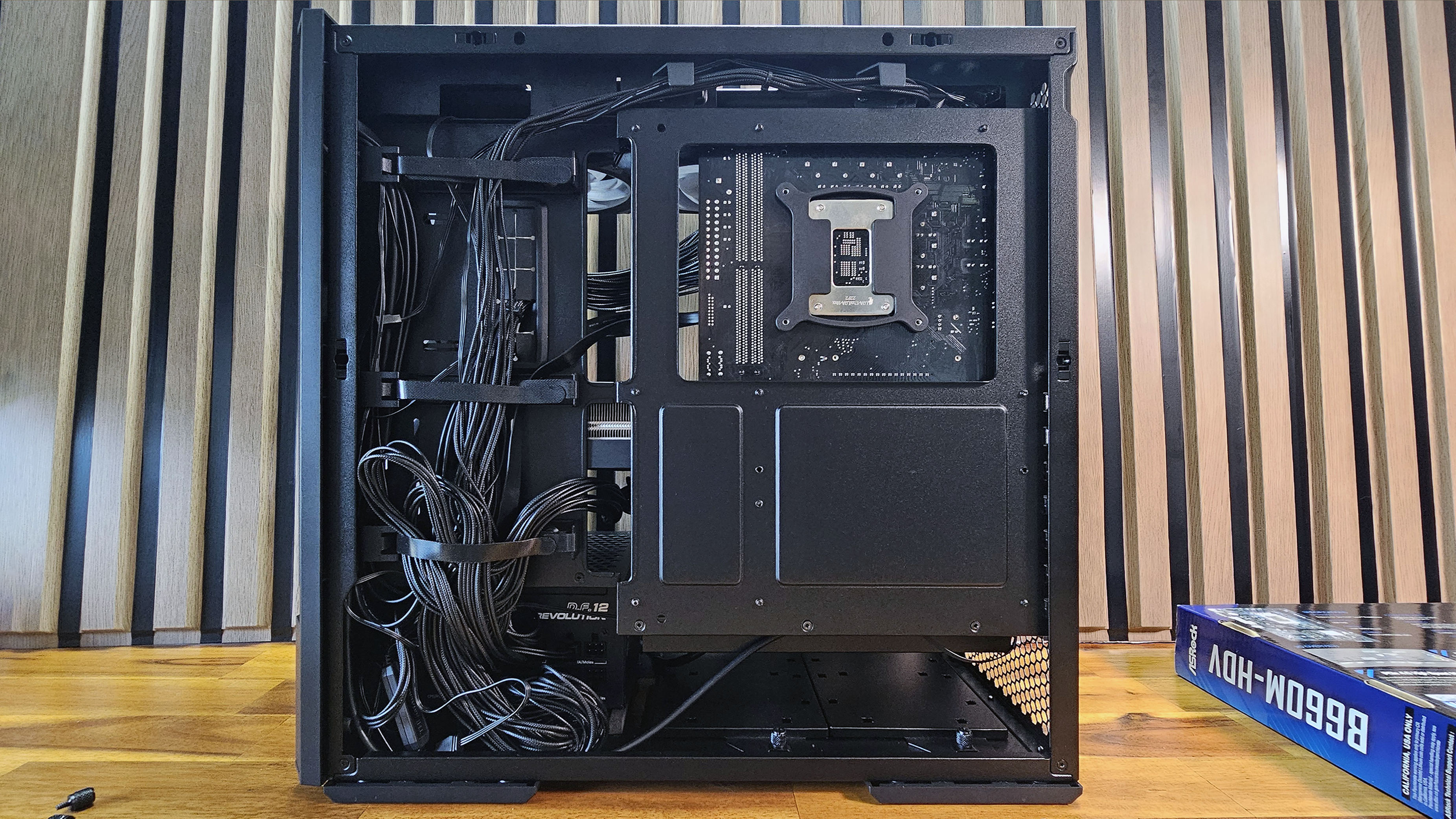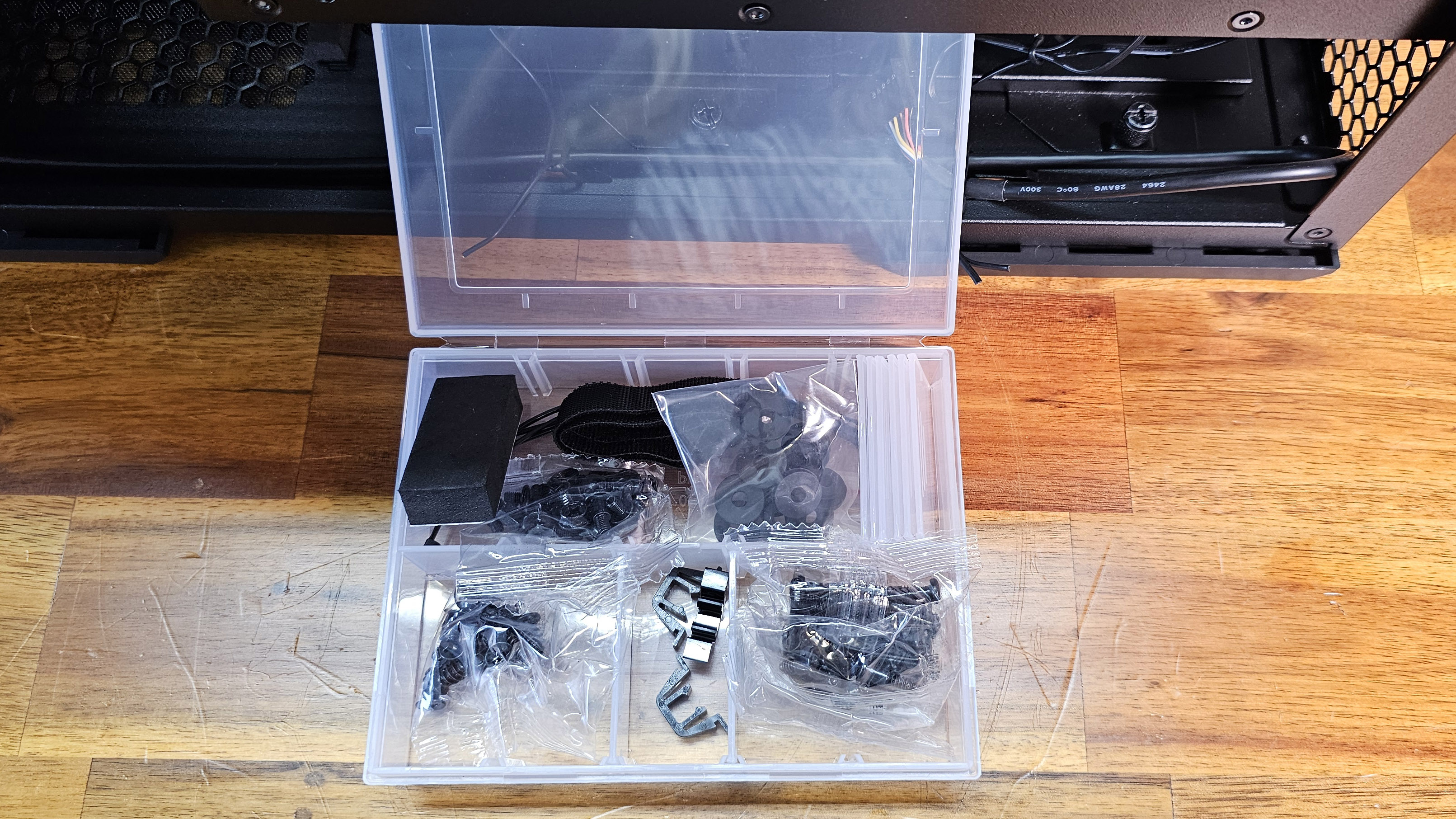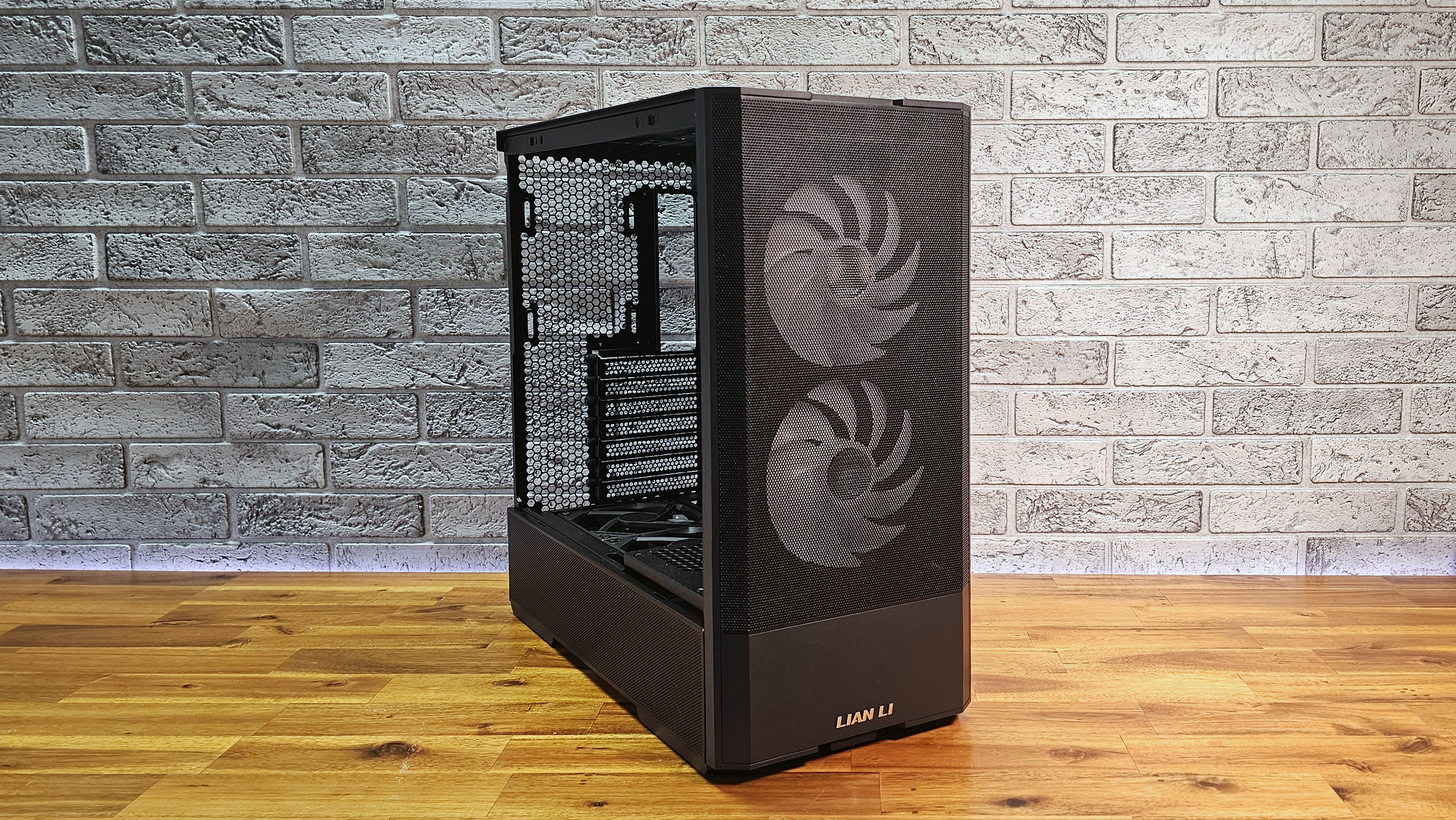Hands-on with Lian Li's Lancool 207 PC case: Rethinking ATX on a budget
PSU up front, GPU cooling party in the back
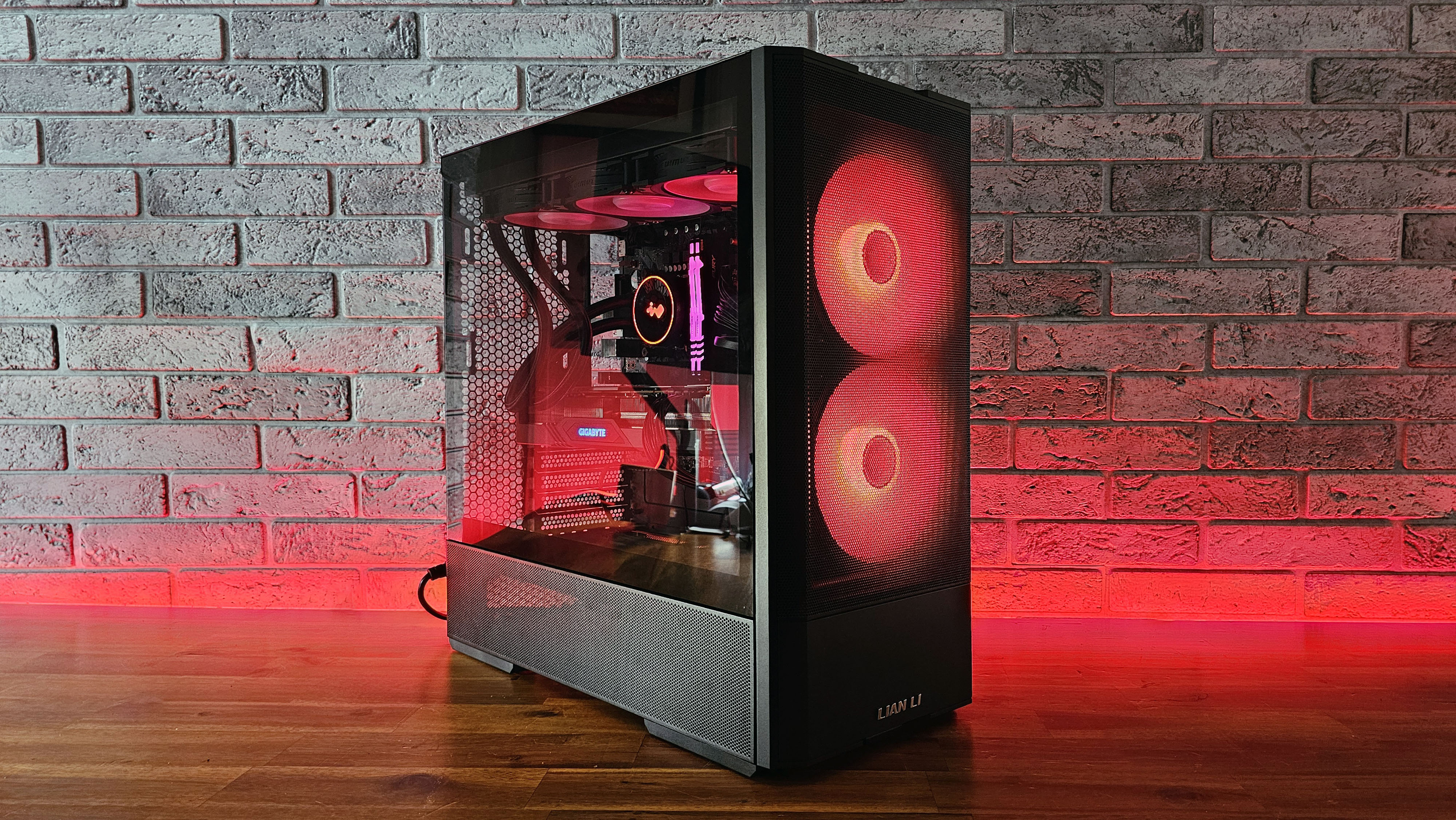
It's a great time to be in the market for an airflow-focused, sub-$80 ATX PC case. Earlier this year, we were impressed by the Phanteks XT Pro Ultra with its four ARGB fans. Now, Lian Li is taking a run at our best PC cases list with the Lancool 207, which also includes four fans and a more compact layout than the XT Pro Ultra, thanks to the novel placement of the PSU.
It's an intriguing design that also has excellent cable routing and GPU-focused airflow. The Lancool 207 looks impressive for $79.99 (or $5 more for the white model). I just wish it supported back-connector motherboards like its Phateks rival.
Specifications of the Lian Li LanCool 207
| Type | Mid-Tower |
| Motherboard Support | ATX (width up to 244mm), Mini-ITX, Micro ATX |
| Dimensions (HxWxD) | 17.95 x 8.62 x 17.94 inches (HWD) |
| Max GPU Length | 14.76 inches (375mm) |
| CPU Cooler Height | 7.1 inches (180mm) |
| External Bays | X |
| Internal Bays | 2x 2.5-inch 3.5-inch |
| Expansion Slots | 7 |
| Front I/O | Two USB 3.0 Type-A (5Gbps), One USB 3.1 Gen 2 Type C (10Gbps), headphone/mic combo jack, power button |
| Front Fans | 2x 140mm ARGB |
| Rear Fans | x |
| Top Fans | x |
| Bottom Fans | 2x 120mm |
| Warranty | 1 year |
Sideways PSU, GPU-focused intake fans
Lian Li touts the internal layout of the Lancool 207 as "ATX Layout re-invented," which is a bit of a stretch. The primary change over traditional cases is that the company has moved the power supply location to the front and, more uniquely, turned it sideways. This effectively turns whatever PSU you use into a Corsair RMx Shift, with cable connections that face the back of the motherboard.
The rear portion of the left side of the case (below the glass panel) is a metal mesh panel so that the power supply can exhaust its heat, along with the heat from any SATA drives, which are also mounted in the bottom chamber on two removable brackets.
The other major feature found in the bottom chamber of the Lancool 207 is a pair of 120mm intake fans. There's no RGB here, but the fans pull in cool air from the mesh door below them, and blow it directly on your GPU. These fans are specced to spin between 500 and 1950 RPM, so if you use a fan curve, they won't get noisy unless things get quite toasty inside your case.
This direct GPU cooling won't likely be necessary if you have something like an RTX 4070 or below, but if you have a monster card that's pulling several hundred watts, having cool air blowing directly at its intake fans is certainly a benefit.
Front RGB fans
The front of the case ships with two ARGB 140mm fans that are quiet in most situations (they're rated to spin between 450 and 1900 RPM) and have an infinity mirror effect in the center. Combined with the removable mesh front panel, they give the case a more polished look than the Phanteks XT Pro Ultra, which ships with three 140mm ARGB fans in the front. It also has visible brackets for smaller 120mm fans that are quite noticeable, particularly when the system is running, and the front fans are lit. The Lancool 207 just looks cleaner.
The rear of the case doesn't ship with a fan, but there's a mount for a 120mm spinner, and the entire rear is vented. So, most configurations should be fine without an exhaust fan, especially if you're mounting a radiator that exhausts out the top.
The Lancool 207 sports quite a bit of mesh overall. Aside from the rear and the small bottom side panel, the front and top panels are mostly mesh, and the right side panel has a mesh section on the bottom, near the storage trays. All the primary panels (save for the mesh section on the bottom of the left side) are removable without tools or by twisting a single thumb screw. The front panel, in particular, has a nice magnetic attachment mechanism. There's also a removable bottom filter that covers the intake for the power supply and pulls out from the front for easy cleaning.
Get Tom's Hardware's best news and in-depth reviews, straight to your inbox.
Lower Motherboard Mount
Moving the PSU to the front of the case allowed Lian Li to lower the motherboard area somewhat, which makes for a shorter case and a little more room up top for thick fans and radiators. At 17.95 x 8.62 x 17.94 inches, the Lancool 207 is more compact than the Phanteks XT Pro Ultra (17.7 x 9.05 x 19.68), but you aren't likely to notice the difference without the two cases side-by-side.
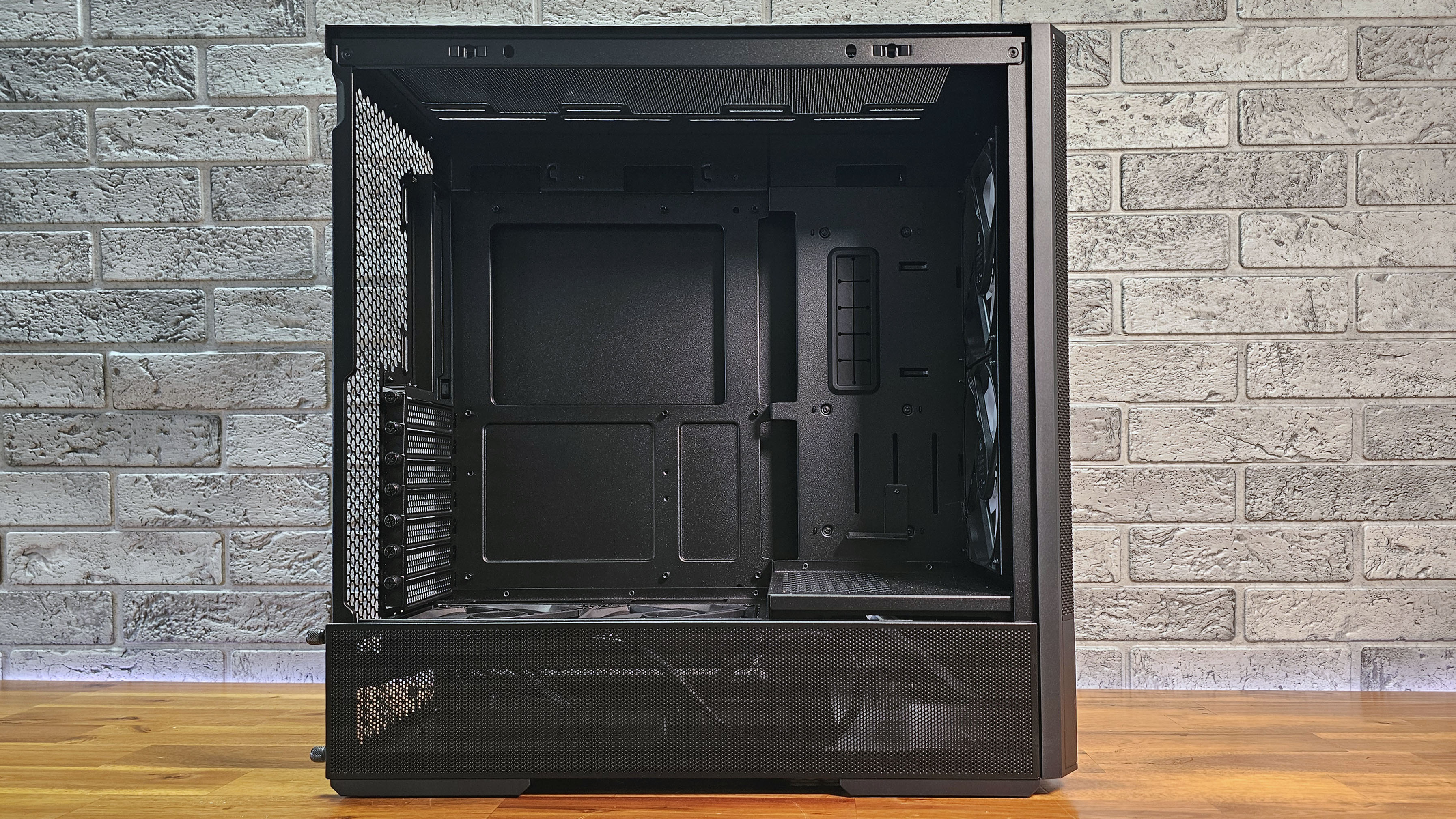
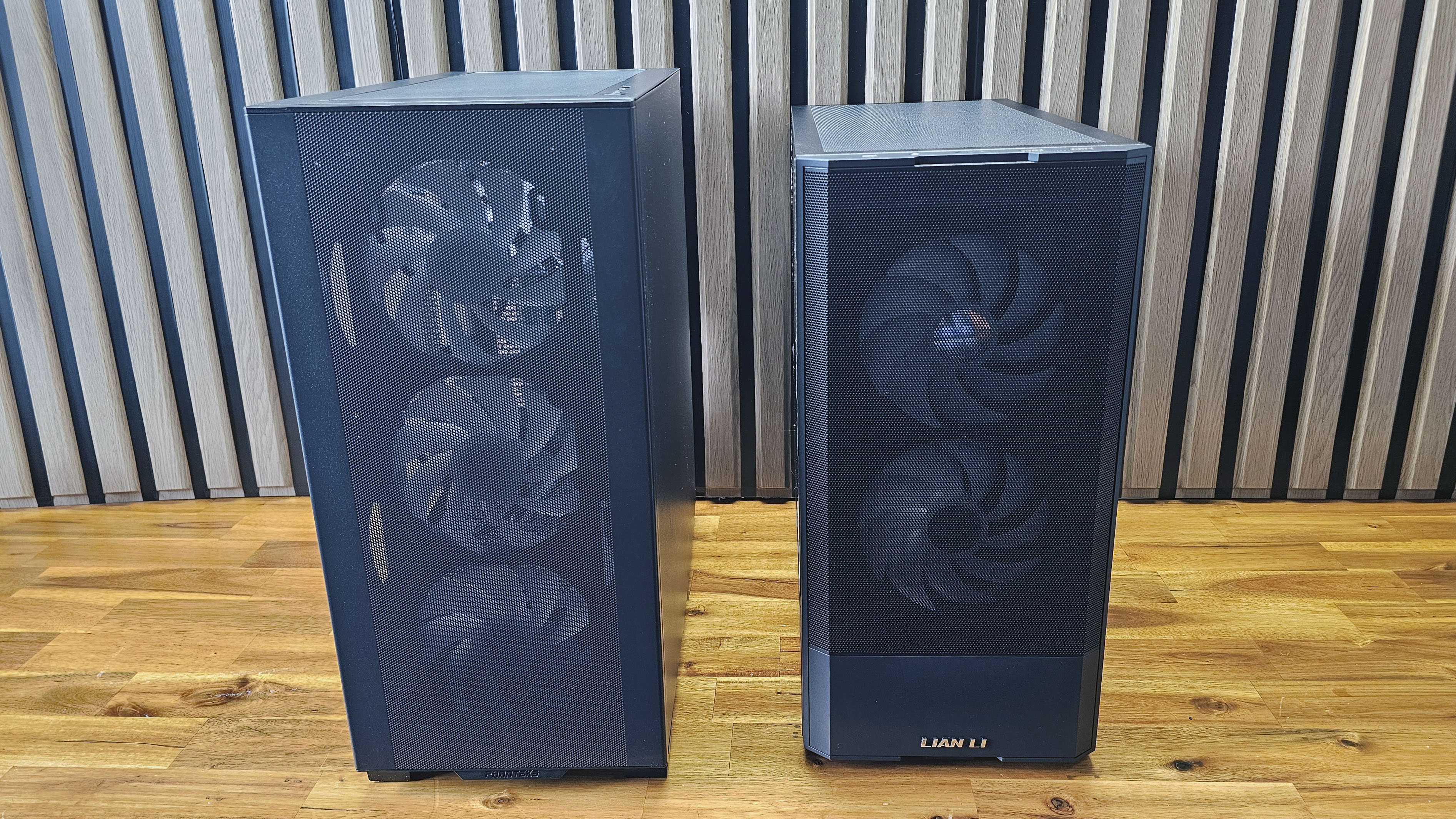
There's also ample cutouts for cooler backplates and cables, with a main grommeted hole for your primary PSU power cable and whatever else you want to route through it. A small GPU support bracket can be mounted in one of three slots, depending on the length of your card, and adjusted up or down about 2.5 inches to match the thickness of your GPU.
The Lancool 207 should fit most hardware you're likely to put in a mainstream mid-tower. It has 14.76 inches of graphics card clearance, 7.1 inches of vertical clearance for one of the best CPU coolers, and support for up to a 360mm radiator up top.
Simple, effective cable routing
Aside from the grommeted holes and cutouts around the motherboard area, Lian Li also paid close attention to keeping cables under control around the backside. There's a hooked pathway for cables up top (though I'm not sure why the hooks face down instead of up) and three wide hook-and-loop fasteners running down the case above the power supply.
It works well and is quite convenient in this case design, with the power supply directly below the cable routing area. That's important given that the horizontally mounted PSU mount is cramped—especially if you're using a large PSU.
Power supplies up to 6.3 inches in length are officially supported. And if you're anything close to that and don't have a modular power supply, you'll probably have to use all the cable routing space available to store extra cables. Even with our compact Enermax Revolution D.F. 12 PSU, things felt a little cramped in this area as we were finishing our build. You could shove PSU cables into the storage area, but obviously, if you have a couple of 2.5- or 3.5-inch drives there, there won't be as much space.
Typical top IO
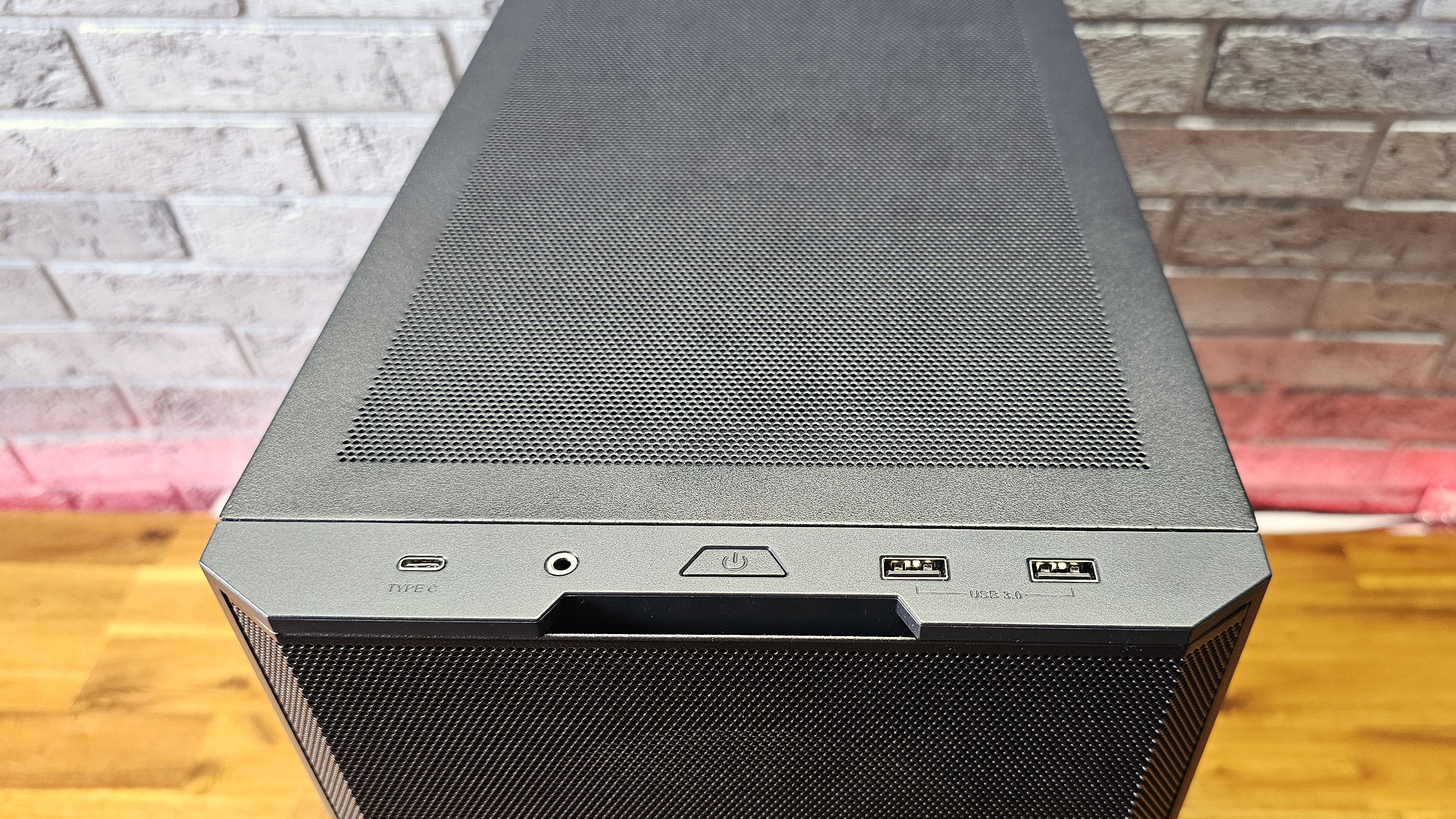
The Lian Li Lancool 207's port selection is about what we'd expect in 2024. You get two USB 3.0 Type-A ports, a single audio jack, a USB-C port, and a power button.
Build components
I have a couple of MSI Project Zero rear-connector motherboards that I've been largely using for builds lately, including in the aforementioned Phanteks case. However, since the Lancool 207 doesn't support those kinds of motherboards, I went looking for a traditional board to pair with the Core i5-13600K I've typically used for recent mainstream builds and cases.
But after a recent mishap with a single bent pin in a socket, the only compatible board I had handy was a decidedly budget-oriented Asrock B660M-HDV. It's hardly ideal for this system, as it's Micro ATX and lacks RGB headers or enough fan connectors for the case fans, AIO pump, and radiator.
However, I made do with a few adapters and a $6 Thermalright device that let me power and control the Lancool 207's RGB fans with a SATA power connector and a few buttons, no motherboard headers necessary. I could have asked around and gotten my hands on a better Intel board, but with Arrow Lake on the horizon, my cluttered office didn't need another component that's about to be obsolete.
Other key components in this build include a Corsair MP600 Pro XT SSD, some old RGB-equipped HyperX DDR4 RAM, a Gigabyte Radeon RX 7700 XT graphics card, and the InWin MR36 360mm AIO that I've used in multiple builds, including the Phanteks XT Pro Ultra.
Building in the Lian Li Lancool 207
Aside from the need to find various adapters and workarounds for the low-end Asrock motherboard, building in the Lancool 207 was pretty straightforward and without any major issues. As noted earlier, there was plenty of room for cables thanks to our compact Enermax power supply and the case's focus on routing. But those looking to put something beefy in this case will want to ensure they have a modular power supply at the very least. Because the horizontal PSU mounting scheme doesn't leave much extra space, given the case is just 8.62 inches wide.
Installing a couple of SATA drives on the two removable trays is pretty simple. But you'll need to use the included rubber washers in the accessory box, because the mounting holes are larger than a typical mounting screw.
Also, shout out to Lian Li for including a handy plastic box with movable dividers, even with its budget cases. For novice builders or those who only build a system every few years, it's a much nicer way to keep extra accessories handy than a tiny cardboard box that you have to open to see what's inside.
Given Lian Li's claim of extra space at the top of the case, I purposefully mounted the radiator and fans before plugging in most of the connectors at the top of the board. And to my surprise, I could still plug everything in without much fuss – even the pesky four-pin supplemental power connecter in the upper-left corner. That being said, if you're planning on installing something really thick, like the Hyte Thicc Q60 AIO, you'd better plug in all the cables up top first. Even then, you may still run into clearance issues, depending on your board and how tall your RAM is.
No part of the case felt particularly flimsy or cheap during the build process. That's always nice to see when you're dealing with a case that sells for significantly less than $100.
Bottom Line
There's not a lot to dislike about the Lancool 207 ATX PC case – especially given its $80 price (or $85 if you're after the white model). With four fans (two RGB and two uniquely blowing directly on your GPU) and a whole lot of mesh, airflow shouldn't be a concern. There's also room for large graphics cards and two SATA drives, which should be enough for most of us in this modern M.2 world.
The sideways-mounted power supply setup is a unique design choice that mostly works well but will limit your ability to use large power supplies (Lian Li says to stay below 160mm). Aside from that, the only thing I don't like about its design is that it's one of the few new ATX cases I've seen this year that doesn't support rear-connector motherboards.
But barring rear-connector support, if you want to make your build look a little fancier (and hide some of your wires in a round-about way), the Lancool 207 also supports the company's four-slot vertical GPU kit.
However, I would avoid a vertically mounted GPU in this case. The metal support bracket of the GPU kit is only partially vented and would clearly severely limit the airflow coming from this case's two 120mm bottom fans, mostly negating one of the nicer features of the Lancool 207.
After a rough start with the Mattel Aquarius as a child, Matt built his first PC in the late 1990s and ventured into mild PC modding in the early 2000s. He’s spent the last 15 years covering emerging technology for Smithsonian, Popular Science, and Consumer Reports, while testing components and PCs for Computer Shopper, PCMag and Digital Trends.
-
thestryker This seems like a new winner for the category and an overall good performing case. The power supply area seems to be the biggest corner cut in the design since the standard mounts have the fan facing the bottom which has little clearance and the cable distance can cause a lot of bending and/or the side panel not fitting well. In the GN review they also mentioned the bottom back would be a source of dust due to how porous the opening is.Reply
As long as you're aware of the downsides and plan accordingly this seems like the only case to get in its general price range (assuming cooling is a priority). -
HideOut In an era when Intels newest CPUS REQUIRE USB 4.0 on their mid and top teir mobos, not having it on the case is becoming a fail. This might be a budget friendly case but the port cant cost more than a few cents more to make.Reply -
thestryker Reply
There aren't any USB4 headers on motherboards (yet) so I'm not sure what exactly you're talking about here, unless it's that they're using USB 3.1 instead of USB 3.2 for the USB Type-C port.HideOut said:In an era when Intels newest CPUS REQUIRE USB 4.0 on their mid and top teir mobos, not having it on the case is becoming a fail. This might be a budget friendly case but the port cant cost more than a few cents more to make. -
PlutoDelic Even if that backside is pretty much exhaust, that kind of opening's just beg for dust build-up.Reply
This looks to be the best airflow case, but i really wish we'd have more filters.
